Assignment Model | Linear Programming Problem (LPP) | Introduction
What is assignment model.
→ Assignment model is a special application of Linear Programming Problem (LPP) , in which the main objective is to assign the work or task to a group of individuals such that;
i) There is only one assignment.
ii) All the assignments should be done in such a way that the overall cost is minimized (or profit is maximized, incase of maximization).
→ In assignment problem, the cost of performing each task by each individual is known. → It is desired to find out the best assignments, such that overall cost of assigning the work is minimized.

For example:
Suppose there are 'n' tasks, which are required to be performed using 'n' resources.
The cost of performing each task by each resource is also known (shown in cells of matrix)
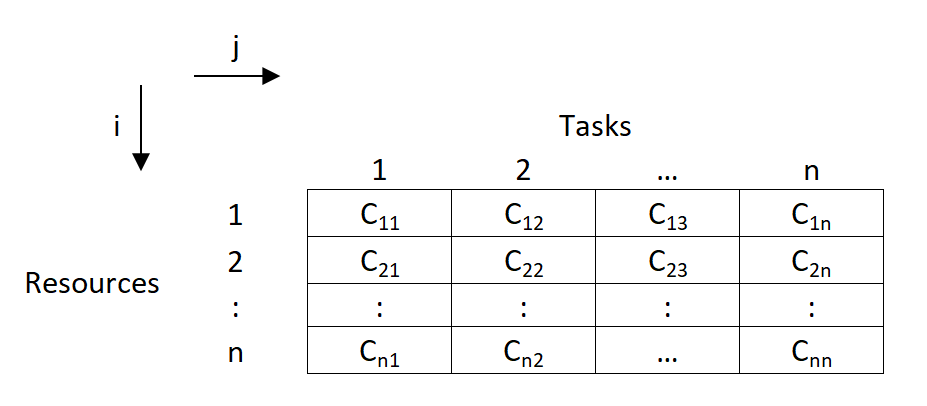
- In the above asignment problem, we have to provide assignments such that there is one to one assignments and the overall cost is minimized.
How Assignment Problem is related to LPP? OR Write mathematical formulation of Assignment Model.
→ Assignment Model is a special application of Linear Programming (LP).
→ The mathematical formulation for Assignment Model is given below:
→ Let, C i j \text {C}_{ij} C ij denotes the cost of resources 'i' to the task 'j' ; such that

→ Now assignment problems are of the Minimization type. So, our objective function is to minimize the overall cost.
→ Subjected to constraint;
(i) For all j t h j^{th} j t h task, only one i t h i^{th} i t h resource is possible:
(ii) For all i t h i^{th} i t h resource, there is only one j t h j^{th} j t h task possible;
(iii) x i j x_{ij} x ij is '0' or '1'.
Types of Assignment Problem:
(i) balanced assignment problem.
- It consist of a suqare matrix (n x n).
- Number of rows = Number of columns
(ii) Unbalanced Assignment Problem
- It consist of a Non-square matrix.
- Number of rows ≠ \not= = Number of columns
Methods to solve Assignment Model:
(i) integer programming method:.
In assignment problem, either allocation is done to the cell or not.
So this can be formulated using 0 or 1 integer.
While using this method, we will have n x n decision varables, and n+n equalities.
So even for 4 x 4 matrix problem, it will have 16 decision variables and 8 equalities.
So this method becomes very lengthy and difficult to solve.
(ii) Transportation Methods:
As assignment problem is a special case of transportation problem, it can also be solved using transportation methods.
In transportation methods ( NWCM , LCM & VAM), the total number of allocations will be (m+n-1) and the solution is known as non-degenerated. (For eg: for 3 x 3 matrix, there will be 3+3-1 = 5 allocations)
But, here in assignment problems, the matrix is a square matrix (m=n).
So total allocations should be (n+n-1), i.e. for 3 x 3 matrix, it should be (3+3-1) = 5
But, we know that in 3 x 3 assignment problem, maximum possible possible assignments are 3 only.
So, if are we will use transportation methods, then the solution will be degenerated as it does not satisfy the condition of (m+n-1) allocations.
So, the method becomes lengthy and time consuming.
(iii) Enumeration Method:
It is a simple trail and error type method.
Consider a 3 x 3 assignment problem. Here the assignments are done randomly and the total cost is found out.
For 3 x 3 matrix, the total possible trails are 3! So total 3! = 3 x 2 x 1 = 6 trails are possible.
The assignments which gives minimum cost is selected as optimal solution.
But, such trail and error becomes very difficult and lengthy.
If there are more number of rows and columns, ( For eg: For 6 x 6 matrix, there will be 6! trails. So 6! = 6 x 5 x 4 x 3 x 2 x 1 = 720 trails possible) then such methods can't be applied for solving assignments problems.
(iv) Hungarian Method:
It was developed by two mathematicians of Hungary. So, it is known as Hungarian Method.
It is also know as Reduced matrix method or Flood's technique.
There are two main conditions for applying Hungarian Method:
(1) Square Matrix (n x n). (2) Problem should be of minimization type.
Suggested Notes:
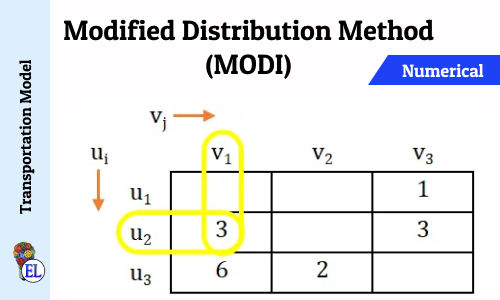
Modified Distribution Method (MODI) | Transportation Problem | Transportation Model

Stepping Stone | Transportation Problem | Transportation Model
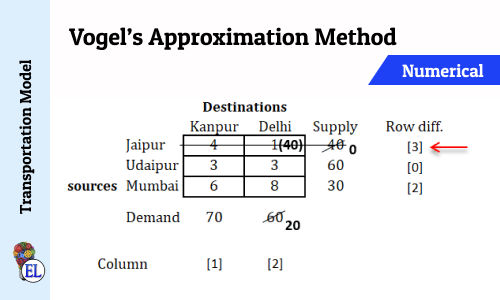
Vogel’s Approximation Method (VAM) | Method to Solve Transportation Problem | Transportation Model
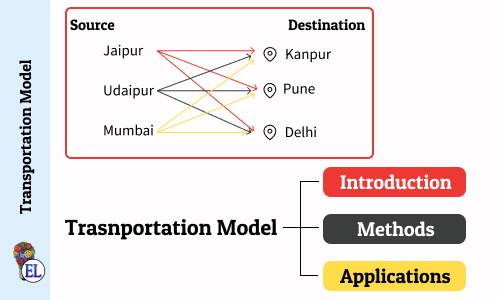
Transportation Model - Introduction
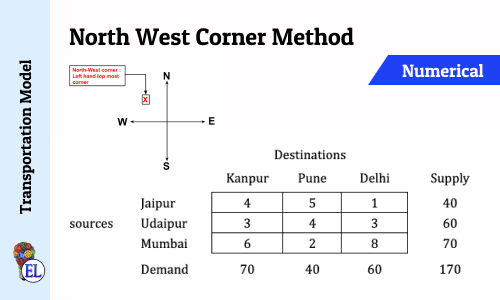
North West Corner Method | Method to Solve Transportation Problem | Transportation Model
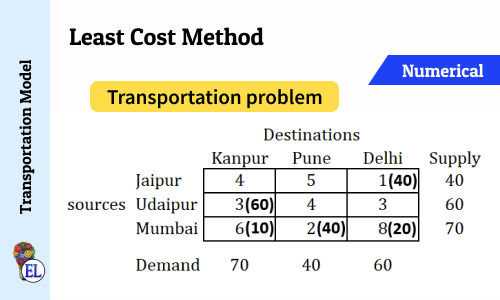
Least Cost Method | Method to Solve Transportation Problem | Transportation Model
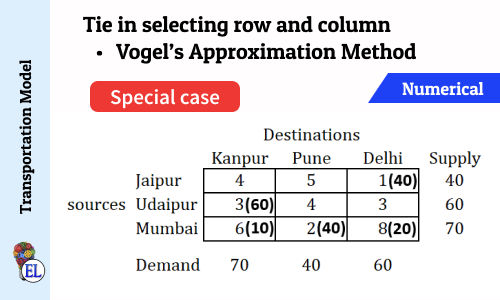
Tie in selecting row and column (Vogel's Approximation Method - VAM) | Numerical | Solving Transportation Problem | Transportation Model
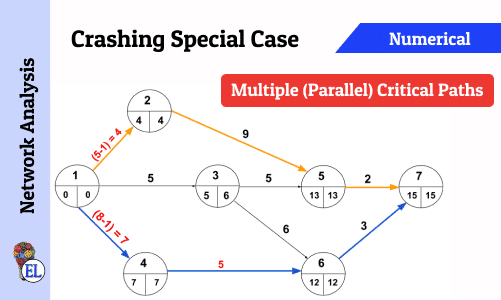
Crashing Special Case - Multiple (Parallel) Critical Paths
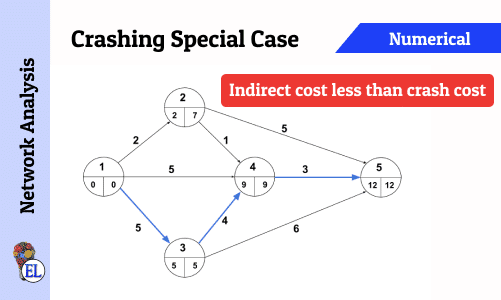
Crashing Special Case - Indirect cost less than Crash Cost
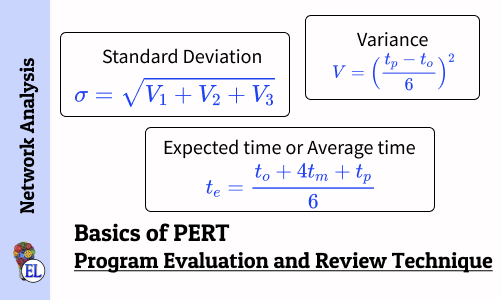
Basics of Program Evaluation and Review Technique (PERT)
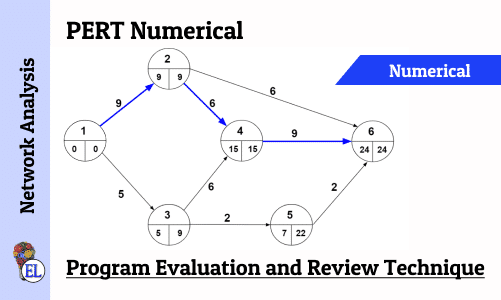
Numerical on PERT (Program Evaluation and Review Technique)

Network Analysis - Dealing with Network Construction Basics
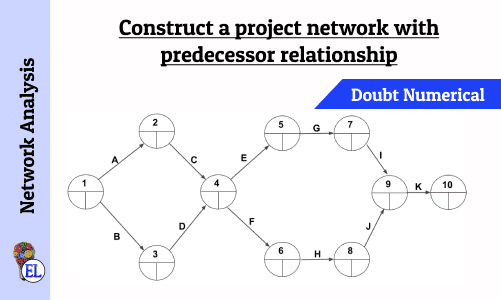
Construct a project network with predecessor relationship | Operation Research | Numerical

Graphical Method | Methods to solve LPP | Linear Programming
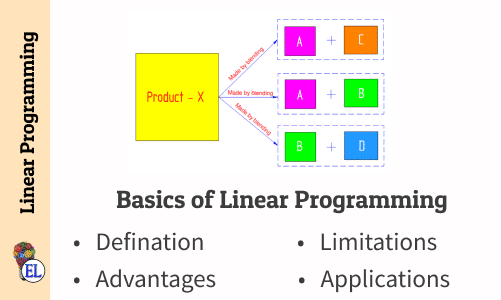
Basics of Linear Programming
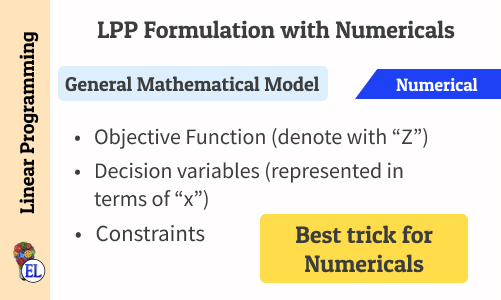
Linear Programming Problem (LPP) Formulation with Numericals

All comments that you add will await moderation. We'll publish all comments that are topic related, and adhere to our Code of Conduct .
Want to tell us something privately? Contact Us
Post comment

Education Lessons
Stay in touch, [notes] operation research, [notes] dynamics of machinery, [notes] maths, [notes] science, [notes] computer aided design.
- MapReduce Algorithm
- Linear Programming using Pyomo
- Networking and Professional Development for Machine Learning Careers in the USA
- Predicting Employee Churn in Python
- Airflow Operators

Solving Assignment Problem using Linear Programming in Python
Learn how to use Python PuLP to solve Assignment problems using Linear Programming.
In earlier articles, we have seen various applications of Linear programming such as transportation, transshipment problem, Cargo Loading problem, and shift-scheduling problem. Now In this tutorial, we will focus on another model that comes under the class of linear programming model known as the Assignment problem. Its objective function is similar to transportation problems. Here we minimize the objective function time or cost of manufacturing the products by allocating one job to one machine.
If we want to solve the maximization problem assignment problem then we subtract all the elements of the matrix from the highest element in the matrix or multiply the entire matrix by –1 and continue with the procedure. For solving the assignment problem, we use the Assignment technique or Hungarian method, or Flood’s technique.
The transportation problem is a special case of the linear programming model and the assignment problem is a special case of transportation problem, therefore it is also a special case of the linear programming problem.
In this tutorial, we are going to cover the following topics:
Assignment Problem
A problem that requires pairing two sets of items given a set of paired costs or profit in such a way that the total cost of the pairings is minimized or maximized. The assignment problem is a special case of linear programming.
For example, an operation manager needs to assign four jobs to four machines. The project manager needs to assign four projects to four staff members. Similarly, the marketing manager needs to assign the 4 salespersons to 4 territories. The manager’s goal is to minimize the total time or cost.
Problem Formulation
A manager has prepared a table that shows the cost of performing each of four jobs by each of four employees. The manager has stated his goal is to develop a set of job assignments that will minimize the total cost of getting all 4 jobs.

Initialize LP Model
In this step, we will import all the classes and functions of pulp module and create a Minimization LP problem using LpProblem class.
Define Decision Variable
In this step, we will define the decision variables. In our problem, we have two variable lists: workers and jobs. Let’s create them using LpVariable.dicts() class. LpVariable.dicts() used with Python’s list comprehension. LpVariable.dicts() will take the following four values:
- First, prefix name of what this variable represents.
- Second is the list of all the variables.
- Third is the lower bound on this variable.
- Fourth variable is the upper bound.
- Fourth is essentially the type of data (discrete or continuous). The options for the fourth parameter are LpContinuous or LpInteger .
Let’s first create a list route for the route between warehouse and project site and create the decision variables using LpVariable.dicts() the method.
Define Objective Function
In this step, we will define the minimum objective function by adding it to the LpProblem object. lpSum(vector)is used here to define multiple linear expressions. It also used list comprehension to add multiple variables.
Define the Constraints
Here, we are adding two types of constraints: Each job can be assigned to only one employee constraint and Each employee can be assigned to only one job. We have added the 2 constraints defined in the problem by adding them to the LpProblem object.
Solve Model
In this step, we will solve the LP problem by calling solve() method. We can print the final value by using the following for loop.
From the above results, we can infer that Worker-1 will be assigned to Job-1, Worker-2 will be assigned to job-3, Worker-3 will be assigned to Job-2, and Worker-4 will assign with job-4.
In this article, we have learned about Assignment problems, Problem Formulation, and implementation using the python PuLp library. We have solved the Assignment problem using a Linear programming problem in Python. Of course, this is just a simple case study, we can add more constraints to it and make it more complicated. You can also run other case studies on Cargo Loading problems , Staff scheduling problems . In upcoming articles, we will write more on different optimization problems such as transshipment problem, balanced diet problem. You can revise the basics of mathematical concepts in this article and learn about Linear Programming in this article .
- Solving Blending Problem in Python using Gurobi
- Transshipment Problem in Python Using PuLP
You May Also Like
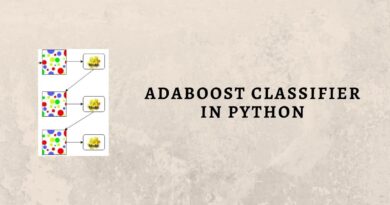
AdaBoost Classifier in Python
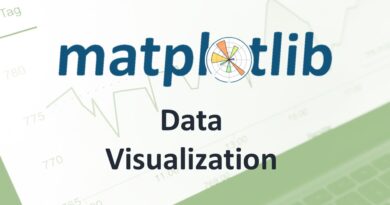
Data Visualization using Matplotlib

Dimensionality Reduction using PCA

- Google OR-Tools
- Español – América Latina
- Português – Brasil
- Tiếng Việt
Solving an Assignment Problem
This section presents an example that shows how to solve an assignment problem using both the MIP solver and the CP-SAT solver.
In the example there are five workers (numbered 0-4) and four tasks (numbered 0-3). Note that there is one more worker than in the example in the Overview .
The costs of assigning workers to tasks are shown in the following table.
The problem is to assign each worker to at most one task, with no two workers performing the same task, while minimizing the total cost. Since there are more workers than tasks, one worker will not be assigned a task.

MIP solution
The following sections describe how to solve the problem using the MPSolver wrapper .
Import the libraries
The following code imports the required libraries.
Create the data
The following code creates the data for the problem.
The costs array corresponds to the table of costs for assigning workers to tasks, shown above.
Declare the MIP solver
The following code declares the MIP solver.
Create the variables
The following code creates binary integer variables for the problem.
Create the constraints
Create the objective function.
The following code creates the objective function for the problem.
The value of the objective function is the total cost over all variables that are assigned the value 1 by the solver.
Invoke the solver
The following code invokes the solver.
Print the solution
The following code prints the solution to the problem.
Here is the output of the program.
Complete programs
Here are the complete programs for the MIP solution.
CP SAT solution
The following sections describe how to solve the problem using the CP-SAT solver.
Declare the model
The following code declares the CP-SAT model.
The following code sets up the data for the problem.
The following code creates the constraints for the problem.
Here are the complete programs for the CP-SAT solution.
Except as otherwise noted, the content of this page is licensed under the Creative Commons Attribution 4.0 License , and code samples are licensed under the Apache 2.0 License . For details, see the Google Developers Site Policies . Java is a registered trademark of Oracle and/or its affiliates.
Last updated 2023-01-02 UTC.
The Assignment Model
The linear programming formulation of the assignment model is similar to the formulation of the transportation model, except all the supply values for each source equal one, and all the demand values at each destination equal one. Thus, our example is formulated as follows :
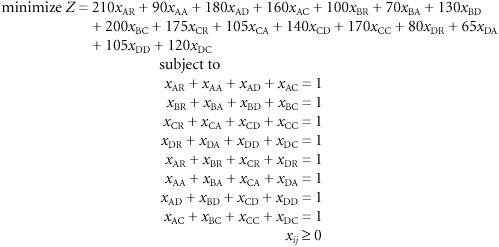
This is a balanced assignment model. An unbalanced model exists when supply exceeds demand or demand exceeds supply.
- The Policy Framework
- Risk-Assessment Methodologies
- Reducing the Risk of an Attack
- Roles, Responsibilities, and Accountabilities
- SIRT Incident Report
- Security Testing
- Automated Assessment Tools
- IDS, Firewalls, and Honeypots
- Physical Security
- Line-Scan Cameras
- CMOS Image Sensors
- Digital Imaging and Communication in Medicine (DICOM)
- Frequency Filtering
- Character Recognition
- The Work-around for PL/SQL 2.x Limitations in Forms 4.5
- Populating a PL/SQL Table from a Block
- Handling Errors
- Programmatically Canceling a Query
- Planting and Growing Trees -Dynamically Adding Nodes Along with Data to an Existing Base Tree
- Article 220 Branch-Circuit, Feeder, and Service Calculations
- Article 382 Nonmetallic Extensions
- Article 408: Switchboards and Panelboards
- Article 411: Lighting Systems Operating at 30 Volts or Less
- Functional Functions
- PHP4 Objects
- Implementing Classes
Assignment Problem: Linear Programming
The assignment problem is a special type of transportation problem , where the objective is to minimize the cost or time of completing a number of jobs by a number of persons.
In other words, when the problem involves the allocation of n different facilities to n different tasks, it is often termed as an assignment problem.
The model's primary usefulness is for planning. The assignment problem also encompasses an important sub-class of so-called shortest- (or longest-) route models. The assignment model is useful in solving problems such as, assignment of machines to jobs, assignment of salesmen to sales territories, travelling salesman problem, etc.
It may be noted that with n facilities and n jobs, there are n! possible assignments. One way of finding an optimal assignment is to write all the n! possible arrangements, evaluate their total cost, and select the assignment with minimum cost. But, due to heavy computational burden this method is not suitable. This chapter concentrates on an efficient method for solving assignment problems that was developed by a Hungarian mathematician D.Konig.
"A mathematician is a device for turning coffee into theorems." -Paul Erdos
Formulation of an assignment problem
Suppose a company has n persons of different capacities available for performing each different job in the concern, and there are the same number of jobs of different types. One person can be given one and only one job. The objective of this assignment problem is to assign n persons to n jobs, so as to minimize the total assignment cost. The cost matrix for this problem is given below:
The structure of an assignment problem is identical to that of a transportation problem.
To formulate the assignment problem in mathematical programming terms , we define the activity variables as
for i = 1, 2, ..., n and j = 1, 2, ..., n
In the above table, c ij is the cost of performing jth job by ith worker.
Generalized Form of an Assignment Problem
The optimization model is
Minimize c 11 x 11 + c 12 x 12 + ------- + c nn x nn
subject to x i1 + x i2 +..........+ x in = 1 i = 1, 2,......., n x 1j + x 2j +..........+ x nj = 1 j = 1, 2,......., n
x ij = 0 or 1
In Σ Sigma notation
x ij = 0 or 1 for all i and j
An assignment problem can be solved by transportation methods, but due to high degree of degeneracy the usual computational techniques of a transportation problem become very inefficient. Therefore, a special method is available for solving such type of problems in a more efficient way.
Assumptions in Assignment Problem
- Number of jobs is equal to the number of machines or persons.
- Each man or machine is assigned only one job.
- Each man or machine is independently capable of handling any job to be done.
- Assigning criteria is clearly specified (minimizing cost or maximizing profit).
Share this article with your friends
Operations Research Simplified Back Next
Goal programming Linear programming Simplex Method Transportation Problem
Copyright © 2003 by Robert Fourer, David M. Gay and Brian W. Kernighan
Your Article Library
Assignment problem in linear programming : introduction and assignment model.
ADVERTISEMENTS:
Assignment problem is a special type of linear programming problem which deals with the allocation of the various resources to the various activities on one to one basis. It does it in such a way that the cost or time involved in the process is minimum and profit or sale is maximum. Though there problems can be solved by simplex method or by transportation method but assignment model gives a simpler approach for these problems.
In a factory, a supervisor may have six workers available and six jobs to fire. He will have to take decision regarding which job should be given to which worker. Problem forms one to one basis. This is an assignment problem.
1. Assignment Model :
Suppose there are n facilitates and n jobs it is clear that in this case, there will be n assignments. Each facility or say worker can perform each job, one at a time. But there should be certain procedure by which assignment should be made so that the profit is maximized or the cost or time is minimized.
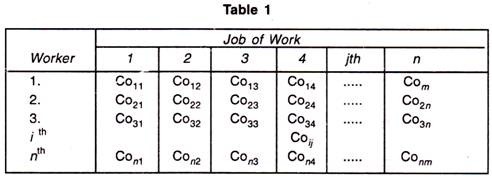
In the table, Co ij is defined as the cost when j th job is assigned to i th worker. It maybe noted here that this is a special case of transportation problem when the number of rows is equal to number of columns.
Mathematical Formulation:
Any basic feasible solution of an Assignment problem consists (2n – 1) variables of which the (n – 1) variables are zero, n is number of jobs or number of facilities. Due to this high degeneracy, if we solve the problem by usual transportation method, it will be a complex and time consuming work. Thus a separate technique is derived for it. Before going to the absolute method it is very important to formulate the problem.
Suppose x jj is a variable which is defined as
1 if the i th job is assigned to j th machine or facility
0 if the i th job is not assigned to j th machine or facility.
Now as the problem forms one to one basis or one job is to be assigned to one facility or machine.

The total assignment cost will be given by

The above definition can be developed into mathematical model as follows:
Determine x ij > 0 (i, j = 1,2, 3…n) in order to
Subjected to constraints

and x ij is either zero or one.
Method to solve Problem (Hungarian Technique):
Consider the objective function of minimization type. Following steps are involved in solving this Assignment problem,
1. Locate the smallest cost element in each row of the given cost table starting with the first row. Now, this smallest element is subtracted form each element of that row. So, we will be getting at least one zero in each row of this new table.
2. Having constructed the table (as by step-1) take the columns of the table. Starting from first column locate the smallest cost element in each column. Now subtract this smallest element from each element of that column. Having performed the step 1 and step 2, we will be getting at least one zero in each column in the reduced cost table.
3. Now, the assignments are made for the reduced table in following manner.
(i) Rows are examined successively, until the row with exactly single (one) zero is found. Assignment is made to this single zero by putting square □ around it and in the corresponding column, all other zeros are crossed out (x) because these will not be used to make any other assignment in this column. Step is conducted for each row.
(ii) Step 3 (i) in now performed on the columns as follow:- columns are examined successively till a column with exactly one zero is found. Now , assignment is made to this single zero by putting the square around it and at the same time, all other zeros in the corresponding rows are crossed out (x) step is conducted for each column.
(iii) Step 3, (i) and 3 (ii) are repeated till all the zeros are either marked or crossed out. Now, if the number of marked zeros or the assignments made are equal to number of rows or columns, optimum solution has been achieved. There will be exactly single assignment in each or columns without any assignment. In this case, we will go to step 4.
4. At this stage, draw the minimum number of lines (horizontal and vertical) necessary to cover all zeros in the matrix obtained in step 3, Following procedure is adopted:
(iii) Now tick mark all the rows that are not already marked and that have assignment in the marked columns.
(iv) All the steps i.e. (4(i), 4(ii), 4(iii) are repeated until no more rows or columns can be marked.
(v) Now draw straight lines which pass through all the un marked rows and marked columns. It can also be noticed that in an n x n matrix, always less than ‘n’ lines will cover all the zeros if there is no solution among them.
5. In step 4, if the number of lines drawn are equal to n or the number of rows, then it is the optimum solution if not, then go to step 6.
6. Select the smallest element among all the uncovered elements. Now, this element is subtracted from all the uncovered elements and added to the element which lies at the intersection of two lines. This is the matrix for fresh assignments.
7. Repeat the procedure from step (3) until the number of assignments becomes equal to the number of rows or number of columns.
Related Articles:
- Two Phase Methods of Problem Solving in Linear Programming: First and Second Phase
- Linear Programming: Applications, Definitions and Problems
No comments yet.
Leave a reply click here to cancel reply..
You must be logged in to post a comment.
Quantitative Techniques: Theory and Problems by P. C. Tulsian, Vishal Pandey
Get full access to Quantitative Techniques: Theory and Problems and 60K+ other titles, with a free 10-day trial of O'Reilly.
There are also live events, courses curated by job role, and more.
WHAT IS ASSIGNMENT PROBLEM
Assignment Problem is a special type of linear programming problem where the objective is to minimise the cost or time of completing a number of jobs by a number of persons.
The assignment problem in the general form can be stated as follows:
“Given n facilities, n jobs and the effectiveness of each facility for each job, the problem is to assign each facility to one and only one job in such a way that the measure of effectiveness is optimised (Maximised or Minimised).”
Several problems of management has a structure identical with the assignment problem.
Example I A manager has four persons (i.e. facilities) available for four separate jobs (i.e. jobs) and the cost of assigning (i.e. effectiveness) each job to each ...
Get Quantitative Techniques: Theory and Problems now with the O’Reilly learning platform.
O’Reilly members experience books, live events, courses curated by job role, and more from O’Reilly and nearly 200 top publishers.
Don’t leave empty-handed
Get Mark Richards’s Software Architecture Patterns ebook to better understand how to design components—and how they should interact.
It’s yours, free.

Check it out now on O’Reilly
Dive in for free with a 10-day trial of the O’Reilly learning platform—then explore all the other resources our members count on to build skills and solve problems every day.

Welcome to maxusknowledge.com

Contact Us:
Email: [email protected]
MBA Knowledge Base
Business • Management • Technology
Home » Management Science » Transportation and Assignment Models in Operations Research
Transportation and Assignment Models in Operations Research
Transportation and assignment models are special purpose algorithms of the linear programming. The simplex method of Linear Programming Problems(LPP) proves to be inefficient is certain situations like determining optimum assignment of jobs to persons, supply of materials from several supply points to several destinations and the like. More effective solution models have been evolved and these are called assignment and transportation models.
The transportation model is concerned with selecting the routes between supply and demand points in order to minimize costs of transportation subject to constraints of supply at any supply point and demand at any demand point. Assume a company has 4 manufacturing plants with different capacity levels, and 5 regional distribution centres. 4 x 5 = 20 routes are possible. Given the transportation costs per load of each of 20 routes between the manufacturing (supply) plants and the regional distribution (demand) centres, and supply and demand constraints, how many loads can be transported through different routes so as to minimize transportation costs? The answer to this question is obtained easily through the transportation algorithm.
Similarly, how are we to assign different jobs to different persons/machines, given cost of job completion for each pair of job machine/person? The objective is minimizing total cost. This is best solved through assignment algorithm.
Uses of Transportation and Assignment Models in Decision Making
The broad purposes of Transportation and Assignment models in LPP are just mentioned above. Now we have just enumerated the different situations where we can make use of these models.
Transportation model is used in the following:
- To decide the transportation of new materials from various centres to different manufacturing plants. In the case of multi-plant company this is highly useful.
- To decide the transportation of finished goods from different manufacturing plants to the different distribution centres. For a multi-plant-multi-market company this is useful.
- To decide the transportation of finished goods from different manufacturing plants to the different distribution centres. For a multi-plant-multi-market company this is useful. These two are the uses of transportation model. The objective is minimizing transportation cost.
Assignment model is used in the following:
- To decide the assignment of jobs to persons/machines, the assignment model is used.
- To decide the route a traveling executive has to adopt (dealing with the order inn which he/she has to visit different places).
- To decide the order in which different activities performed on one and the same facility be taken up.
In the case of transportation model, the supply quantity may be less or more than the demand. Similarly the assignment model, the number of jobs may be equal to, less or more than the number of machines/persons available. In all these cases the simplex method of LPP can be adopted, but transportation and assignment models are more effective, less time consuming and easier than the LPP.
Related posts:
- Operations Research approach of problem solving
- Introduction to Transportation Problem
- Procedure for finding an optimum solution for transportation problem
- Initial basic feasible solution of a transportation problem
- Top 7 Best Ways of Getting MBA Assignment Writing Help
- Introduction to Decision Models
- Transportation Cost Elements
- Modes of Transportation in Logistics
- Factors Affecting Transportation in Logistics
- Export/Import Transportation Systems
One thought on “ Transportation and Assignment Models in Operations Research ”
Exclussive dff. And easy understude
Leave a Reply Cancel reply
Your email address will not be published. Required fields are marked *
- Assignments

CS224S Assignment 3: Leveraging audio foundation models and working with non-English speech
Spring 2024.

Time and Location
Mon. & Wed. 12:30 PM - 1:20 PM Pacific Time Jordan Hall room 040 (420-040)
Please read this entire handout before beginning. We advise you to start early and to make use of the TAs by coming to office hours and asking questions! For collaboration and the late day policy, please refer to the home page.
About the Assignment
In this assignment you will leverage foundation models to work with multiple non-English languages. We will use foundation model features to visualize speech data from several languages, and leverage these models to do speech transcription and improve performance without being able to understand each language as we work! As a warmup, you will implement the CTC loss function to build intuition for how it computes alignments implicitly as part of loss computation.
Submission Instructions
This assignment is due on Monday 05/20/2024 by 11:59PM pacific (or at latest on 05/23/2024 with three late days). For this assignment, you will submit your filled-in/executed Colab Notebook (just one) with all code/output, as PDF (combine both PDFs into the same file) on Gradescope. Please tag your question responses.
All instructions and starter code are contained in the Google Colab notebook. You will need to make a copy to your Google Drive before beginning.
You can access the starter notebook in Google Drive . Remember to make a copy before starting your work!
- Implementing Payroll for Mexico
Employment Level Options for Payroll Elements
Your enterprise uses an employment model. When you create elements, you select the employment level at which to attach the element. If you select a level below payroll relationship, each assignment record can have separate element entries.
Payroll Relationship Level
This level is the highest level for accumulating balances. Every payroll run processes payroll relationship elements.
Here are the typical elements to define at payroll relationship level:
Tax deductions
Child support
Medical care
Benefits activity rate calculations, such as employee contributions and flex credits
Assignment Level
Use this lowest level for elements that require different entries for different assignments, or when the element applies only to specific assignments.
Here are the typical elements to define at assignment level:
Assignment salary
Regular hours
Sales bonus
Profit-sharing bonus

IMAGES
VIDEO
COMMENTS
What is Assignment Model? → Assignment model is a special application of Linear Programming Problem (LPP), in which the main objective is to assign the work or task to a group of individuals such that;. i) There is only one assignment. ii) All the assignments should be done in such a way that the overall cost is minimized (or profit is maximized, incase of maximization).
THE ASSIGNMENT MODELS a special case of the transportation model is the assignment model. This model is appropriate in problems, which involve the assignment of resources to tasks (e.g assign n persons to n different tasks or jobs). Just as the special structure of the transportation model allows for solution
In this video you will learn how to solve an assignment model problem
The assignment problem is a fundamental combinatorial optimization problem. In its most general form, the problem is as follows: The problem instance has a number of agents and a number of tasks. Any agent can be assigned to perform any task, incurring some cost that may vary depending on the agent-task assignment.
For solving the assignment problem, we use the Assignment technique or Hungarian method, or Flood's technique. The transportation problem is a special case of the linear programming model and the assignment problem is a special case of transportation problem, therefore it is also a special case of the linear programming problem.
This section presents an example that shows how to solve an assignment problem using both the MIP solver and the CP-SAT solver. Example. In the example there are five workers (numbered 0-4) and four tasks (numbered 0-3).
The assignment model is a special form of a linear programming model that is similar to the transportation model. There are differences, however. In the assignment model, the supply at each source and the demand at each destination are each limited to one unit. An assignment model is for a special form of transportation problem in which all ...
This Video will help the student to Understand the Algorithm of Assignment Model.Accordingly, Row Operation / Column Operation and, Row Assignment / Column A...
The assignment model is useful in solving problems such as, assignment of machines to jobs, assignment of salesmen to sales territories, travelling salesman problem, etc. It may be noted that with n facilities and n jobs, there are n! possible assignments. One way of finding an optimal assignment is to write all the n! possible arrangements ...
The assignment problem represents a special case of linear programming problem used for allocating resources (mostly workforce) in an optimal way; it is a highly useful tool for operation and project managers for optimizing costs. The lpSolve R package allows us to solve LP assignment problems with just very few lines of code.
Assignment Models The linear programs in Chapters 1 and 2 are all examples of classical ''activity'' mod-els. In such models the variables and constraints deal with distinctly different kinds of activities — tons of steel produced versus hours of mill time used, or packages of food bought versus percentages of nutrients supplied.
This is an assignment problem. 1. Assignment Model: Suppose there are n facilitates and n jobs it is clear that in this case, there will be n assignments. Each facility or say worker can perform each job, one at a time. But there should be certain procedure by which assignment should be made so that the profit is maximized or the cost or time ...
Assignment Problem is a special type of linear programming problem where the objective is to minimise the cost or time of completing a number of jobs by a number of persons. The assignment problem in the general form can be stated as follows: "Given n facilities, n jobs and the effectiveness of each facility for each job, the problem is to ...
The Assignment Problem is a special type of Linear Programming Problem based on the following assumptions: However, solving this task for increasing number of jobs and/or resources calls for…
All the steps involved in a maximization type assignment problem..What are the basic differences between a minimization and maximization type problem?How to ...
The task is to assign 1 job to 1 person so that the total number of hours are minimized. So, the first step in the assignment model would be to deduce all the numbers by the smallest number in the row. Hence, the smallest number becomes 0 and then we can target the zeroes to arrive at a conclusion.
Transportation and assignment models are special purpose algorithms of the linear programming. The simplex method of Linear Programming Problems(LPP) proves to be inefficient is certain situations like determining optimum assignment of jobs to persons, supply of materials from several supply points to several destinations and the like.
models the source is connected to one or more of destination. The most common. method to solve assignment models is the Hungarian metho d. In this paper. introduced another method to solve ...
transportation model can be extended to other areas of operation, including, among others, inventory control, employment scheduling, and personnel assignment. The transportation problem (model) seeks the determination of a transportation plan of a single commodity from a number of sources (origins) to a number of destinations. It involves the
Application of Linear Programming ( Assignment Model ) ELsiddigIdriss. Mohamed Idriss, ElfarazdagMahjoub Mohamed Hussein. Published 2015. Business, Computer Science, Engineering. TLDR. The aims of this paper are to clarify the theoretical aspects of the assignment problem and provide customization model that reduces the cost of resource ...
Task assignment model is a type of linear programming models [10] which uses to allocate equipment, manpower and cost to improve production or services which lead to improve profitability, reduce ...
class of weighted assignment models is set forth. The general formulation is shown to encompass a variety of integer programming models including knapsack models, transignment models, generalized assignment models and facility location models. Additionally, the model's relationship to the classical assignment model, the trans-
Assignment model. Jan 30, 2016 • Download as PPTX, PDF •. 37 likes • 32,904 views. P. Palash Badal. The assignment problem is a special case of transportation problem in which the objective is to assign 'm' jobs or workers to 'n' machines such that the cost incurred is minimized. Read more.
Assignment Models-Class Exercises-2024 - Free download as PDF File (.pdf), Text File (.txt) or read online for free. models
Taylar Rojas PUBH 381 October 13, 2023 Sister Natalie Garbett W05 Assignment Logic Model Name of Program: Nigeria's community Response for Covid-19 Purpose Statement: Our mission is to instate education and initiatives the anticipate the spread of Covid-19 in Nigerian Communities.
About the Assignment. In this assignment you will leverage foundation models to work with multiple non-English languages. We will use foundation model features to visualize speech data from several languages, and leverage these models to do speech transcription and improve performance without being able to understand each language as we work!
Your enterprise uses an employment model. When you create elements, you select the employment level at which to attach the element. If you select a level below payroll relationship, each assignment record can have separate element entries. Payroll Relationship Level. This level is the highest level for accumulating balances.